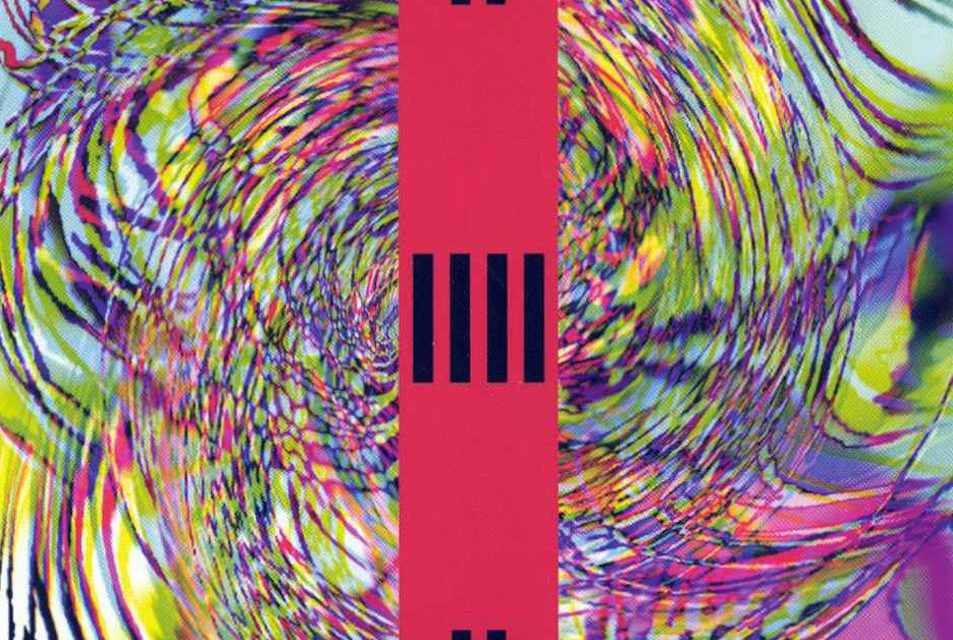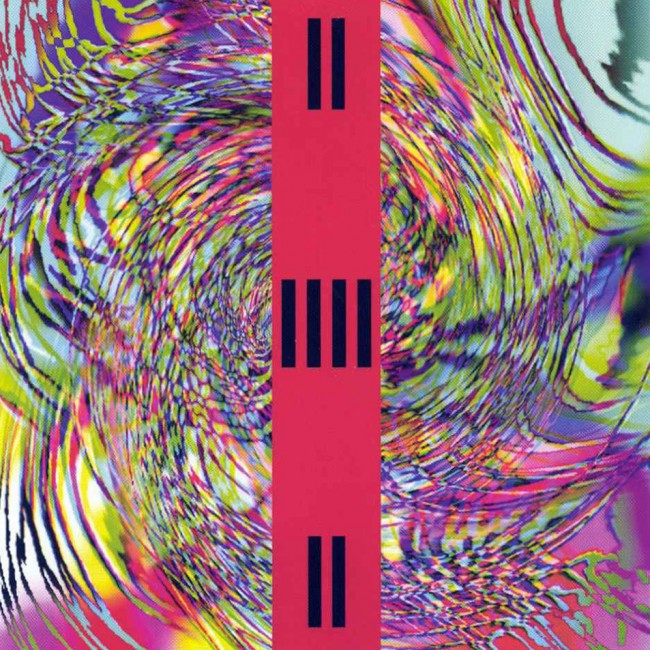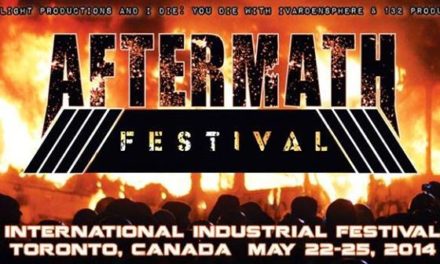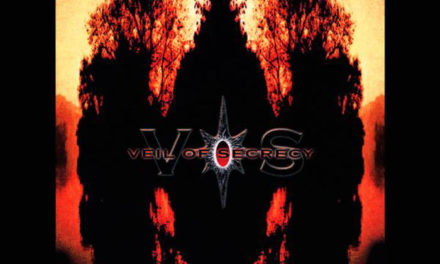Like many of the features here at I Die: You Die, this one was born from a conversation between the Senior Staff: which industrial albums stand out as unique or different from the rest of a band’s discography? Not necessarily ones that are completely different (although we included a few of those) and not necessarily ones that are just better than anything else the band recorded (although one might have slipped in there too), but what records could you stand back and say “This album does not fit with the rest of this band’s recorded output”? It proved to be an interesting enough brainstorming session that we thought we’d commit it to the site and look for some feedback from our readers. What are your black sheep industrial albums? Give our list a read and then reply in the comments!
Numb, Christmeister (1989)
An underrated record from an underrated band, Don Gordon’s Numb project never made another album quite like Christmeister. The record certainly bears the mark of the self-titled debut in its meaty programming, and would point to the group’s future records like the seminal Death on the Installment Plan and the still jaw-dropping electro-industrial masterpieceBlood Meridian, but in this specific moment Numb were a full-on industrial rawk machine. A portion of that obviously due to the addition of some raunchy guitar to the mix, but you can’t undersell the importance of vocalist Blair Dobson either; his unhinged and psychotic turn as lead singer is certainly one of the best and most memorable things about Christmeister in retrospect. Legend (or at least that one article in Alternative Press) has it that Dobson got the boot from the band when he told Gordon he was going to murder him, and listening back to the LP it’s hard to blame Don for taking the threat seriously. Few industrial bands have ever sounded quite as dangerous and close to the edge as this.
mind.in.a.box., R.E.T.R.O. (2010)
Stefan Poiss and co. were at pains to explain to their fanbase that R.E.T.R.O. was not the next chapter in their ongoing suit of cyberpunk conceptual albums (fifth chapter Memories is just around the corner as we type). We have vague memories of people initially being put off by this detour, but R.E.T.R.O.‘s charms soon won us (and plenty of others) over. Presaging much of the mood of outrun electro if not its literal sounds, the mix of m.i.a.b.’s more symphonic ambitions with chiptune melodies felt like peanut butter and chocolate in 2010, and still does today. Quirky pop tunes like “8 Bits” sit in perfect harmony with the space rock theatrics of various segments from classic Commodore 64 soundtracks. In the years since R.E.T.R.O., Poiss seems to have partitioned off this sort of non-narrative work to his side projects (THYX and Loomec), while continuing mind.in.a.box.’s cyber-noir saga.
Throbbing Gristle, 20 Jazz Funk Greats (1979)
Like numerous other acts from across the experimental spectrum (Wire, Ulver), Throbbing Gristle never sat still long enough for an aesthetic to truly calcify. Even in spite of their roaming exploration, 20 Jazz Funk Greats still stands out. Three years into their mission, Chris, Cosey, Gen, and Sleazy had realised that pure discordant noise in and of itself was neither a necessary nor sufficient condition for the sort of aural and psychological upheaval they were committed to producing. While the lessons of Jazz Funk Greats would be integrated into later works to varying degrees (The Endless Not maybe being the prime example), they’d never again attempt anything quite so radical as deliberately pursuing anonymity, obscurity, and perhaps even banality. After the scorching death rattle of an industrial society in the throes of self-consumption connoted by Second Annual Report and D.O.A., the sparse bleeps and steam-valve gasps of the opening title track sound more like disco falling prey to entropy than the famed wrecking of civilisation. It’s not all a dogged pursuit of negative dialectics (to crib from Adorno), though. “Hot On The Heels Of Love” has an evocative sense of danger and eroticism that rivals any of its more traditional disco brethren. It and “Walkabout” also cannily primed industrial people for the more melodic programming which would begin to enter their music, and (along with The Normal) arguably helped kickstart synthpop itself. Once again, we can’t endorse Drew Daniel’s 33 1/3 book enough on the record’s singular place within industrial culture as well as TG’s already singular catalog.
Snog, Beyond the Valley of the Proles (2003)
David Thrussell had been toying with the whole folk-americana thing since 1997’s Buy Me, I’ll Change Your Life (on which they infamously covered Lee Hazelwood’s “Make The Little Flowers Grow”), but it was still a bit of a shocker when Snog went fully down the rabbit hole on Beyond the Valley of the Proles. The production is recognizable, as are Thrussell’s acerbic lyrics, but the synthetic elements take a serious backseat to twangy electric and strummed acoustic guitars. Snog had always owed a debt to fiery American folk heroes like Woody “This Machine Kills Fascists” Guthrie, but never this literally, even long time listeners could be forgiven for thinking “Fill My Hole” or “Businessman” were old protest songs given a modern makeover. Snog would return to their more recognizable electronic modus operandi on 2006’s uneven Vs. The Faecal Juggernaut Of Mass Culture, but with the benefit of a few years perspective Proles has a special sort of charm, a culmination of one element of an artist’s work before they moved on to different creative pastures.
Gridlock, Further (1999)
“Transitional” is often a dirty word when used to assess records, a suggestion that a band or artist was lost between two identifiable eras. Further is special specifically because it falls in between the two distinct sounds that define Mike Cadoo and Mike Wells’ musical partnership. The Synthetic Form is gritty Puppy indebted electro-industrial, and Trace is beautifully realized technoid. Somehow the space between those two albums is occupied by a wholly unique mixture of sounds and genres that neither the Mikes, nor any other artist would ever touch again. Is it Vocal Power Noise? Sure. Industrialized IDM? Yeah, that makes sense. Some mutant form of drill and bass? All that and more. Truthfully none of those descriptors fully encapsulates it, which is by and large what makes it so memorable today. The lasting of legacy of Gridlock is their astonishing grasp of sound design and the musicality of their particular take on shredding metal percussion, square in the middle lands Further, a record that speaks to everything they were and everything they would become.
Skinny Puppy, Rabies (1989)
Sure, Rabies contains Puppy’s arguably best know tune, and it seems to have been plenty of people’s first exposure to the group (including one half of the Senior Staff’s). And sure, just about every Puppy LP is notable different from 2/3rds of the rest of their catalog, but twenty five years on the machine gun guitar riffs and crisp choruses of Rabies still stand apart from the rest of Puppy’s oeuvre. No small part of this has to be credited to the unparalleled influence an outside party had on the core group. Bill Leeb, Mark Walk, and Dave Ogilvie have all made their mark on SP records in various ways, but the influence Al Jourgensen had on Rabies and the band itself far out-measures those other collaborators’. The stories of personal demons and conflict within the band at this period are the stuff of grim legend. It’s tough to listen to Rabies knows that Jourgensen had designs on recruiting Ogre for Ministry and not hearing similarities with Al’s main project. That doesn’t necessarily tarnish Rabies‘ merits, but it can’t help but make it the odd record out in their discography.
Haujobb, ninetynine, (1999)
The trajectory Haujobb have taken, while fascinating, isn’t necessarily hard to chart in retrospect: from their beginnings in Puppy worship, through the next-level cyber breaks of Solutions For A Small Planet, to the uneasy and fraught middle ground they currently occupy between post-industrial and techno. ninetynine remains an anomaly. The exact connection between the end product and the scrapped/renamed “Cut, Cycle, Copy” project remains something of a mystery. Whether the original material was retooled or simply replaced (and whether CCC would have appeared under the Haujobb moniker), the near-zen minimalism of ninetynine has no parallel in Haujobb’s extant work, or really on any records released by associated bands. Between handing over a fair share of the vocals to Vanessa Briggs’ cooing and the inclusion of oboe and melodica, the normally malleable Haujobb template was completely abandoned. True, some of these elements might have resurfaced in certain Architect tracks, but it’s unlikely we’ll ever encounter an outlier like ninetynine under the Haujobb moniker again.
Steril, Purification, (2002)
Truth be told, there are plenty of moments on the German band’s fourth LP which are perfectly in keeping with their classic sound and legacy. Eschewing then ubiquitous futurepop sounds, a good half of 2002’s Purification continues in the vein of earlier Steril records, which can perhaps be seen as a fascinating link between 90s American coldwave and the then still emerging European anhalt scene (albeit with some more melodic elements surfacing on Purification and Realism). Plenty of tunes stand out at complete odds from both that sound and each other, though. You’ve got the pure banging house of “Strange Pusher” which no one could possible mistake as an industrial tune, closer “Phoenix From The Ashes” which wouldn’t have have felt out of place over the credits of just about any commonplace thriller flick, and most incongruous of all the “Ray Bans and a convertible down the Autobahn” feel of “I Get Closer”. It’s impossible to hear the flute flourishes on the latter and not wonder if they were angling for a Tiesto mix.
Ministry, Twitch (1986)
The famously contested story about Ministry’s sophomore album Twitch is that Uncle Al Jourgensen’s transformation from the synthpop singing dandy of With Sympathy to industrial overlord is attributable to the influence of studio wizard Adrian Sherwood. Given more freedom than he supposedly had on his debut, Al spent months in the studio with Sherwood and collaborator Keith LeBlanc reworking tracks to fit a new, darker vision of Ministry. The results speak for themselves: where the much more famous Land of Rape and Honey would add guitars for the coup de grâce on the synthpop era of the band, Twitch finds the band in a full-on synth n’ sample laden industrial mode more akin to the EBM and electro-industrial being pioneered elsewhere. Ministry would never sound like this again, and more’s the pity; with a decade plus of boring metal albums in their discography, we could have done with another album’s worth of “We Believe” and “My Possession” when they were in a position to deliver it. As an interesting aside, several unused songs (which both LeBlanc and Jourgensen have claimed writing credits for) from the Twitch sessions would be released on Keith LeBlanc’s solo album, which in turn would lead to the formation of Tackhead.
Cubanate, Interference (1998)
The last album by the mighty industrial rock juggernaut that was Cubanate is certainly their most unique. Where all of their previous efforts had emphasized the pairing between Marc Heal’s sneering vocals, chunky guitars and a distinctive techno-industrial rhythm section, Interference subbed out the latter elements and subbed in a drum n’ bass backing. In retrospect the change makes a lot of sense: industrial’s brief moment in the 90s sun was over and the world of breakbeat based electronic music was just peaking, and who could blame Heal and band for wanting to explore a new horizon? Responses at the time were frequently less than kind, with many fans dismissing the record or outright labeling it as a sell-out move. Some 17 years later it stands as a pretty interesting document of its era, comparable to similar work being done by the earliest breakcore artists and the digital hardcore of Atari Teenage Riot. That it would prove to be the final Cubanate album is disappointing, one wonders what stylistic experiments Cubanate might have embarked on going forward from that point.
Stabbing Westward, Ungod (1994)
There will be those who question a Stabbing Westward placement on this list. To those people we would ask, have you heard Ungod? Far from the polished up dross of the subsequent Wither Blister Burn + Peel, the project’s debut was a dark, grimy and filled with the kind of deeply held emotion their later catalogue would never come close to capturing again. The key to the record might be Stuart Zechman, a Wax Trax associate (who played on Chris Connelly’s Whiplash Boychild and a few Pigface recordings) who was a member for the writing and recording of the album but departed before the release of the follow-up. An excellent account of the era is available in this piece from Gary Suarez in Consequence of Sound, but even it fails to capture the fundamental difference between the band that made Ungod and the band that would later make the charts: a sharp philosophical divide that separates a record full of desperation and pathos from the much prettier but less compelling music to follow.
Front 242, Pulse (2003)
It might be unfair to label a band’s most recent release as a singular oddity: who’s to say it doesn’t mark a permanent shift we just haven’t seen further examples of? But when that band is as crucial to the entire history of the EBM genre as Front 242 and when they haven’t released an album in twelve years, it starts to make sense to view Pulse (and sister EP Still And Raw) as a special break from form. Sure, 242 changed their pitch up with the Evil albums, blending in new breaks and 90s buzzbin guitars, but Pulse marked an even bigger leap. Newer downtempo and glitch textures began to make their presence felt in the 242 genome. Following up on the “Animal” suite, longer compositions were broken into individual movements. And for perhaps the first time, 242 looked backward, but not with an eye for nostalgia. On “No More No More” and “Song”, the classic EBM bassline which 242 had pioneered was taken up again, but almost in the context of a sample. Just as countless techno producers have mined, say, Kraftwerk, 242 revisited their own legacy not to rest on their laurels, but to find what strange new permutations might be wrought from juxtaposing those elements with entirely new ones. If Front 242 do ever elect to release another LP, it will have a most peculiar pedigree to live up to.







well here’s the funny thing about Ministry’s “Twitch” album, we ALMOST got a part two… or maybe we did with Manufactures “Terrorvision” album released two years after in 1988 to Twitch released in 86.
Boston based Manufacture were known by Al Jourgenson, who was a fan.
Manufacture were then hired by Al Jourgenson to open for a Ministry
show (Twitch tour) and after seeing them live, instantly worked out a
deal with WAX! TRAX! for a record, which Al Jourgenson was to produce.
Manufacture then became the opening act for several Ministry shows in
the mid-west and Chicago, for the remainder of that “tour”.
During the pre-production of the record (“Terrorvision”),
MANUFACTURE and Al Jourgenson took some time out to Record a 12″
REVOLTING COCKS single with Richard 23 (Of Front 242), titled “You
Often Forget”. The result was a single released by REVCO with Richard
23’s lyrics on it and Al & Manufacture’s programming, using
Manufacture’s original sound samples.
When the single was released, No writing credit (they claimed)
was given to Manufacture for the work they did on “You Often Forget”
and they (allegedly) had disagreements with Al Jourgenson about it resulting in a falling out.
Manufacture were then signed to Nettwerk (Through Dave
Olgilvy, a co-producer/engineer/live-mixer of Skinny Puppy) The songs
Manufacture wrote for Wax! Trax! became the NETTWERK album
“Terrorvision”. They utilized even more of the same set of original
industrial samples, (the same ones they used for “You Often Forget”)
which Manufacture had recorded live on location with a demolition
company that was destroying a large office building in Boston, MA,
USA., As well as a vast array of other sound samples.
So “Terrorvision” can very much be looked at as ‘Twitch’ Part 2, even though it sounds exceptional on its own.
Nice article guys, keep up the awesome work. 😀
I’d add X-Marks the Pedwalk’s Meshwork to this list. Their first 3 albums were very Skinny Puppy-esque with sci-fi media samples and dark subject material. Meshwork was an abrupt departure, incorporating melodic trancey sounds and clean vocals. I remember it being quite the controversy when it was released. In many ways, Meshwork was a precursor to the futurepop sound that dominated the scene years later.
Everything Front 242 did was amazing.
My personal choice would be Meat Beat Manifesto’s ACID. Sure there are hints of what was coming and it has some signature sounds but it totally knocked me back when it came out. It stands apart from the rest of their discography.
A bit about ninety-nine. As far as trajectory, I think the transition makes more sense if you pan out and consider the side projects being done at the time. S’apex and meet I feel are the missing links between Solutions and 99. Also notable are the reconstructions and reconstructions of the Matrix remix disc (along with a library of sounds to make your own music). Haujobb was at the time pushing against what was expected of them. Illustrated more in this interview (http://www.sonic-boom.com/interview/haujobb.interview.html) 99 was an amazing feat of taking music that was wholly accessible and then obscuring the dominant elements and presenting it in a sort of avante garde minimalist way.
Anyhow, great article guys. Always love what you put together here.
‘Michael
Killer List! Couldn’t agree more. Also, good point by ChrisB. on XMTP’s Meshwork.
I’d also actually consider Skinny Puppy’s “The Greater Wrong of the Right” for this list.
It had way more in common with the first two OHGR albums than anything Puppy had done in the years before or after. To be honest, I kinda wish they stayed with that sound a little longer – Sunnypsyop and Welt are among my favorite albums in any genre.
The first thing that came to mind was The Eyes Of Stanley Pain. Even though it’s generally regarded as Download’s signature album, it really seems out of place among everything else they’ve done.
III is often cited as the point where Download really switched gears, but I’d argue that it’s a pretty logical progression from Furnace. Listen to them back-to-back and its not hard to see that the underlying pretty elements in the former were brought to the surface in the latter. Furnace’s second half (with songs like “Attalal” and “Beehatch”) could be mixed into III’s tracklist pretty seamlessly.
But Stanley Pain? With most of its songs building off leftovers from The Process, and Mark Spybey speaking through almost-Ogre vocal FX on practically every track? That sticks out quite a bit to me.
With SP gone, it seems pretty clear that Download was being primed as a commercially viable main project, which meant flitting closer to what Skinny Puppy fans would want to hear and putting a very strong focus on vocals.
The fact that Phil Western barely contributes to this album, and that Dwayne wasn’t around to contribute to future albums, also helps it stand out in the catalogue.
While you can see some of the IDM elements that would become so prominent on subsequent albums, you just won’t find anything close to songs like “Possession” or “Separate” or “Sidewinder” on any other Download album. It’s not the evolutionary step between Furnace and III. You know what it is? Remember those old Marvel “What If?” comics? Well The Eyes Of Stanley Pain is basically “What if Skinny Puppy continued without Ogre?”
Psychopomps ‘Fiction Non-Fiction’ get my vote for the most oddball blacksheep left turn albums ever!
Front Line Assembly’s “Caustic Grip”.
To me, there always seemed to be a pretty straight line connecting “Gashed Senses & Crossfire” and “Tactical Neural Implant”, with “Caustic Grip” representing an odd side-step. The arrangements are a lot more stripped down on CG than on… well, any other FLA album, really. What has come to distinguish FLA from most of their peers is their attention to detail and the depth and intricacy of their synth- and sample-work, so this is a significant departure. The paring down of musical elements allows the rhythms and Leeb’s barked vocals to take center stage, resulting in a more aggressive sound. Now, GS&C and TNI are both chock-full of aggression too, but it’s a much more nuanced aggression than on CG. Someone once likened CG to being confronted by a knife-wielding maniac, whereas TNI is more like encountering a person who may be nuts, whose incomprehensible mutterings may be threatening, and who may be concealing a weapon, which ends up being that much more unsettling.
The exceptions that prove the rule are “Provision”, whose use of guitar ought to foreshadow “Millennium”, but has little in common with the outright metallicity of that album. And then there’s “Threshold”, which sounds like an attempt to rewrite GS&C’s “Hypocrisy” as a mid-tempo club anthem. They might not sound that out of place on the other FLA albums of the period… maybe.
It’s as though Messrs. Leeb and Fulber used “Digital Tension Dementia” as a template for most of CG, resulting in an album of balls-to-the-wall intensity, then decided they’d gotten it all out of their system. And maybe they had – didn’t they start work on their next album, only to scrap most of the songs they’d come up with, aside from the B-sides from the “Mindphaser” and “The Blade” singles?
Ultimately, while CG is a worthy addition to the FLA canon, I can’t help but consider it a blind alley in their evolution, a signpost to paths not taken.
I don’t know, Caustic Grip is a pretty natural extension of their sound at the time. I’d say it was with TNI that they sort of left behind the obvious Nitzer Ebb and DAF style influences and moved into what would really shape their sound.
I’d say Millennium would be the FLA record I would put on this list. Even though they’ve incorporated guitars to various degrees throughout their discography, the metal influence on Millennium has never really been revisited.
Mentallo and The Fixer – Burnt Beyond Recognition
Laibach – Kapital
Klinik – Contrast
Frontline Assembly – State of Mind
Architect – Lower Lip Interface
Leather Strip – The Re-birth of Agony
Out Out – Voiceprint
Solar Enemy – Proceed to Beyond
Click Click – Shadowblack
Stereotaxic Device – 100 Per Day Extinct
If I had to pick out a Stabbing Westward album that didn’t fit with their repertoire, it would have been their final self-titled album. It mostly abandoned any of the synth work and lyrical themes the previous albums had and went all-out radio rock. Granted, that would then exclude it from this list immediately since it’s a basically a pop album, not an industrial album. It’s no surprise that the self-titled album basically spelled the end of the band. But yeah, there’s definitely some fantastic stuff on Ungod.
Surprised you’ve put “Rabies” as SP’s black sheep. I would have the dope overkilled and overdosed (“Love in Vein”) “Last Rights” here instead.
As for FLA, my vote goes for “Millenium”. It’s great, but it just doesn’t fit. It’s heavily metalified vibes are temporarily upheld by a rap/hip hop (!). Wtf?!
As for Front 242, I agree “Pulse” sucks, but really – the two anomalies, which in fact is one, is – I’m too lazy to count – Fuck Up Evil and Evil Off. Love those two, though. 🙂
Although not being a “Haujobb album” at all, “Ninetynine” is damn good!
Apoptygma Berzerk – You and Me Against The World
Imperative Reaction – Eulogy for the Sick Child
Oomph! – Oomph!
I agree with many of albums listed here but I find that these albums don’t fit with these bands other albums too.
The older I get, in some weird I find myself enjoying a band’s sharp turn to a whole different sound and vibe. For example I find myself listening to SPK’s mainstream funk pop sound turn more than their jarring earlier work. (Then again DAF 1st Step To Heaven is my fave DAF thing ever) Great points made about Twitch sadly being the only fun sort of body album by Ministry…but I think most of us would agree PTP was prety much a direct sequel to Twitch. And as people pointed out side things like late 80’s Revolting Cocks. The transition to full on metal industrial 90-92 Ministry was perfect for the time happening(and for me as an angsty teen) but again I keep going back to the Twitch era.
Anyways, I could definitely see a part two to this article soon,
but expanded to be “albums that marked a sharp change for the rest
of a bands sound”. Ministry’s Mind being a famous example
I’d add the following:
VNV Nation – Chrome. Ronan and Mark by late 2003 seemed to still be following the PTF-Empire-Futureperfect dark cinematic narrative(tho half of Futureperfect definitely signaled the more airy sound of Chrome) with the release of the Honour 2003 single. And as we saw, b-sides on 2009’s Reformation collection further proved this. Yet somewhere in 2004 VNV decided to switch gears with Chrome and I know many fans felt disappointed as much as they gained other ones.
A more recent example is X Marks The Pedwalk’s 2010 Innerzone comeback which saw them in the 2000’s futurepop sound they’re now in.